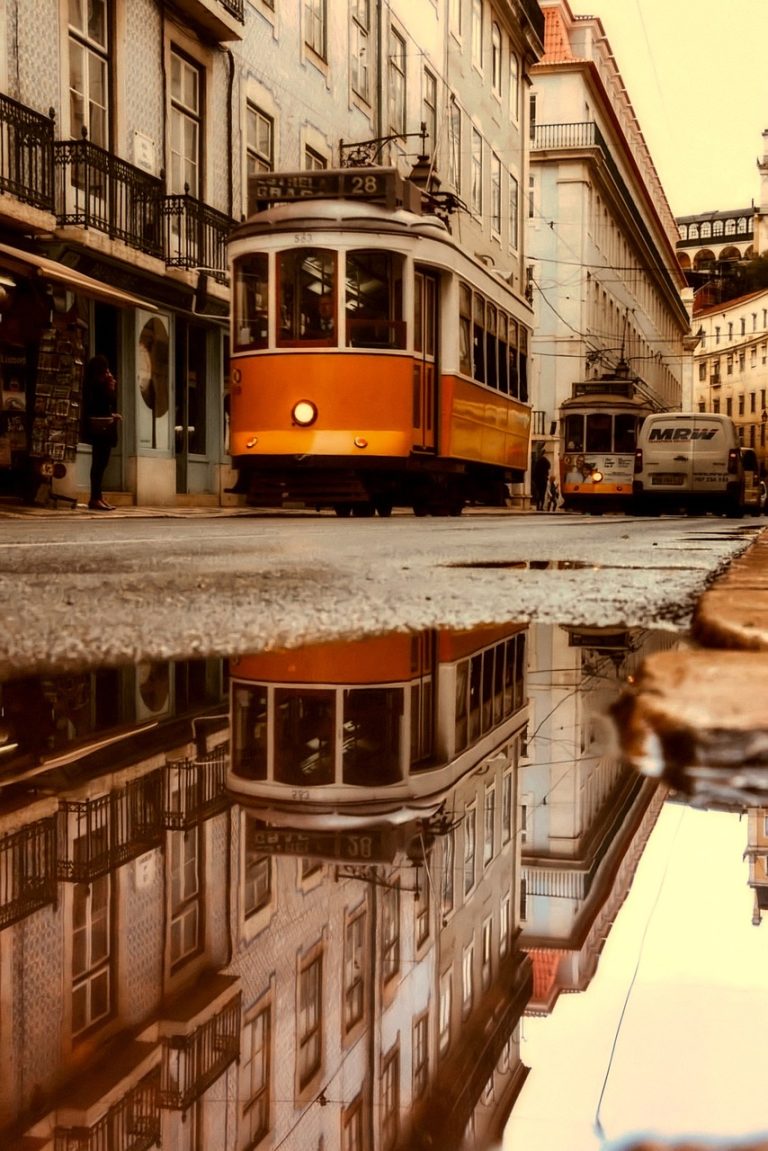Listen (English voice)
Lisbon Portugal Video
Navigating Lisbon Portugal: Overcoming Travel Challenges
Lisbon, the capital city of Portugal, is a vibrant and historic destination that attracts visitors from all over the world. As with any travel experience, navigating a new city can present its own set of challenges. In this article, we will explore some common obstacles that travelers may encounter in Lisbon and provide helpful tips to overcome them.
Arriving at Lisbon Portela Airport
- Transportation Options: Upon arrival at Lisbon Portela Airport, you have several transportation options to reach the city center. The most convenient and cost-effective option is to take the metro. The airport is connected to the red line of the metro system, which provides easy access to various parts of the city. Taxis and rideshare services are also available outside the terminal.
- Language Barrier: While English is widely spoken in tourist areas, it can still be helpful to learn a few basic Portuguese phrases. This can make communication easier, especially when interacting with locals who may not speak English fluently.
- Exchange Currency: If you need to exchange currency upon arrival, there are currency exchange offices and ATMs available at the airport. It’s advisable to compare rates and fees before making any transactions.
- Local SIM Card: If you require mobile data during your stay, consider purchasing a local SIM card at the airport. This will ensure you have access to internet services and can easily navigate the city using maps or translation apps.

Getting Around the City
- Public Transportation: Lisbon has an efficient public transportation system that includes buses, trams, and the metro. The metro is particularly convenient for navigating the city center and reaching popular tourist attractions. Consider purchasing a rechargeable transportation card, such as the Lisboa Card, which offers unlimited travel on public transportation.
- Tram 28: Tram 28 is a famous tourist attraction in itself, as it takes you on a scenic journey through the narrow streets of Lisbon’s historic neighborhoods. However, it can get crowded, so it’s best to avoid peak hours if possible.
- Walking: Lisbon is a city best explored on foot, especially in areas like Alfama and Baixa. Wear comfortable shoes and be prepared for some uphill walks, as Lisbon is known for its hilly terrain.
- Taxis and Rideshares: Taxis and rideshare services like Uber are readily available in Lisbon. They can be a convenient option for shorter trips or when you prefer not to use public transportation.
Navigating the Hills of Lisbon
- Funiculars and Elevators: Lisbon has several funiculars and elevators that help navigate the city’s steep hills. The most famous one is the Elevador de Santa Justa, which connects Baixa with the higher neighborhood of Carmo. These transportation options not only save you energy but also provide scenic views.
- Comfortable Footwear: As mentioned earlier, Lisbon’s streets can be hilly and cobblestoned, so it’s essential to wear comfortable shoes. Opt for shoes with good grip to prevent slipping on the smooth surfaces.
- Take Breaks: Don’t hesitate to take breaks and rest at viewpoints or cafes along your route. Enjoy the breathtaking views while recharging your energy.

Using Public Restrooms
- Paying for Restrooms: In some public places, you may encounter paid restrooms. Keep some small change handy, as you may need to pay a small fee to use these facilities.
- Cafes and Restaurants: If you’re in need of a restroom and don’t want to pay, you can often find free restrooms in cafes and restaurants. It’s customary to make a small purchase before using these facilities.
- Public Parks and Gardens: Lisbon has many beautiful parks and gardens that often provide free public restrooms. Take advantage of these green spaces while exploring the city.
Exploring Lisbon’s Cuisine
- Pasteis de Nata: Don’t miss the opportunity to try Lisbon’s famous custard tarts, known as Pasteis de Nata. These delicious treats can be found in bakeries throughout the city, with the most famous being Pastéis de Belém.
- Seafood: Being a coastal city, Lisbon is renowned for its fresh seafood. Indulge in dishes like grilled sardines, bacalhau (salted cod), and seafood rice.
- Tasca Restaurants: For an authentic dining experience, visit a tasca restaurant, which serves traditional Portuguese dishes in a cozy and casual atmosphere. These local eateries offer a taste of Lisbon’s culinary heritage.
- Food Markets: Visit Lisbon’s food markets, such as Mercado da Ribeira or Mercado de Campo de Ourique, to sample a variety of local produce, cheeses, and traditional snacks.
Visiting Popular Tourist Attractions
- Belem Tower: Located in the Belem district, Belem Tower is a UNESCO World Heritage site and an iconic symbol of Lisbon. Arrive early to beat the crowds and enjoy the panoramic views from the top.
- Jeronimos Monastery: Another UNESCO World Heritage site, Jeronimos Monastery is an architectural masterpiece that shouldn’t be missed. Explore the stunning cloisters and admire the intricate details.
- Castelo de Sao Jorge: Perched on a hilltop, Castelo de Sao Jorge offers panoramic views of Lisbon. Take your time to wander through the castle grounds and enjoy the historical exhibits.
- Alfama Neighborhood: Explore the charming Alfama neighborhood, known for its narrow streets, colorful houses, and Fado music. Get lost in its maze-like alleys and discover hidden gems.
Enjoying Lisbon’s Nightlife
- Bairro Alto: Bairro Alto is Lisbon’s nightlife hub, with numerous bars and clubs. Join the locals and enjoy a drink or two in this vibrant neighborhood.
- Fado Houses: Experience the soulful sounds of Fado, Portugal’s traditional music genre, in one of Lisbon’s Fado houses. These intimate venues offer an authentic cultural experience.
- Docas: Located along the waterfront, Docas is a trendy area with bars and restaurants housed in renovated warehouses. Enjoy a drink while overlooking the Tagus River.
- Pink Street: Rua Cor-de-Rosa, also known as Pink Street, is a lively street in Cais do Sodré lined with bars and clubs. It’s a popular spot for partygoers.

Staying Safe in Lisbon
- Pickpockets: Like any popular tourist destination, Lisbon has its share of pickpocketing incidents. Stay vigilant, especially in crowded areas, and keep your belongings secure.
- Safe Neighborhoods: Lisbon is generally a safe city, but it’s advisable to stick to well-lit and populated areas, especially at night. Avoid walking alone in secluded or unfamiliar neighborhoods.
- Emergency Numbers: Familiarize yourself with the local emergency numbers, including 112 for general emergencies and 115 for the tourist police.
Conclusion
Navigating Lisbon may present some challenges, but with the right information and preparation, you can make the most of your visit. From transportation options to exploring the city’s attractions and enjoying its vibrant nightlife, Lisbon has something to offer every traveler. Embrace the unique charm of this historic city and create unforgettable memories.
References
- visitlisboa.com
- lonelyplanet.com
- lisboacard.org
- lisbon.net
- theculturetrip.com







